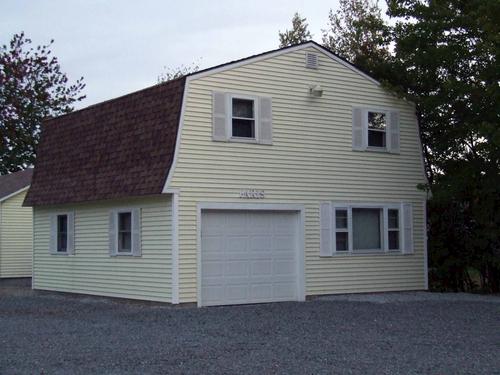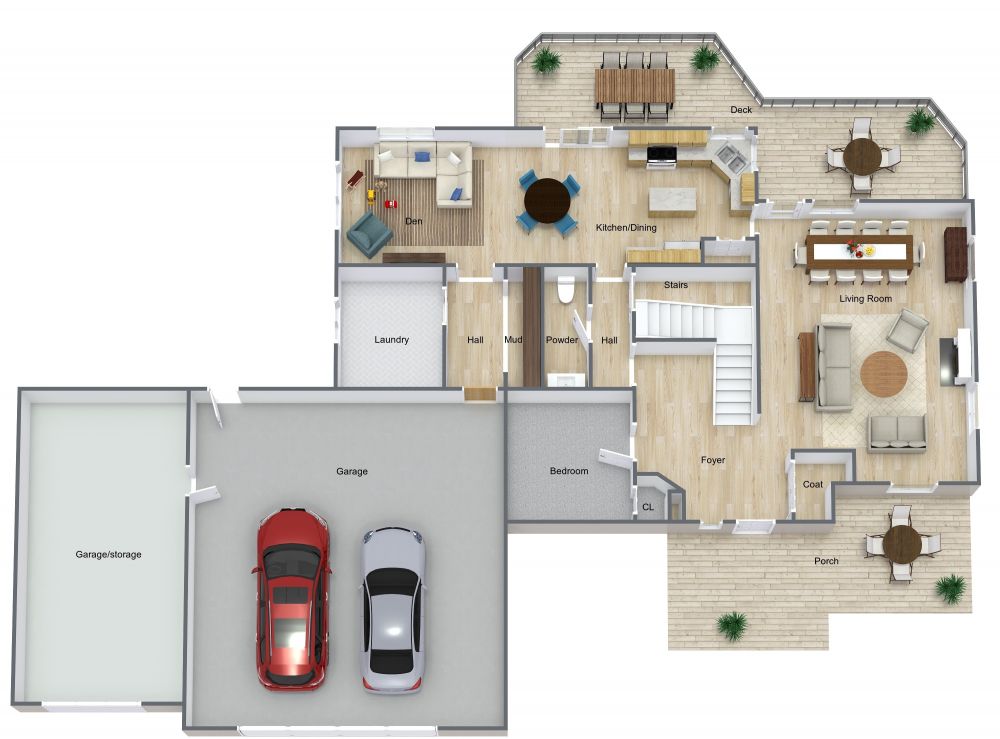
They are ideal for large, bulky items. They can be wall-mounted or freestanding, and they come in a variety of sizes and materials. They're also a cost-effective option, and they offer versatility in both appearance and function.
Wall-mounted storage shelves are attached to the wall using metal brackets. You can use them to store small items like cans or larger tools. The units are also available in a variety of colors and designs.
Some wall shelves are adjustable, allowing users to adjust the height of a shelf as needed. This is great for taller items, or to create narrow shelves.
Garage shelving is typically made from wood, however it can be made out of a variety other materials. Your shelves will likely be used frequently so it is important to choose a strong material.

If you intend to store a lot power tools, then consider buying a unit made of aluminum or other strong metals. This will ensure that shelves are resistant to corrosion, warping, and breaking down under heavy use.
Overhead storage shelf
A overhead storage shelf is a good choice if you need to store large amounts of equipment in your garage. These racks attach directly onto the walls, maximising wall space. These racks can be used to store seasonal items, such as snow blowers and holiday decorations.
Lowes has many heavy-duty garage shelves. The Pro Series Black 2x8ft Wall Mounted Shelf provides 16 square feet storage. You can choose from one or two shelves and it has a 600-pound weight limit.
Another type of garage shelf that is popular is the stackable one. It allows you to create a custom-designed storage system that fits your needs and your space. These racks can either be placed vertically or connected side by side. They are also easy to install.
These racks are constructed with a heavy-duty frame, support cables and can be adjusted to match your stud spacing. You'll be happy with your purchase thanks to a ten year warranty.

Mounted shelf by Newagewall
If you need extra dry ingredients, equipment, and supplies above your sink or stove, this shelf is a smart investment. It can support up to 600 pounds and features 2.25 inch-wide by 1.25-inch-thick T-Bar laterals. It also has a C-shaped front perimeter beam to help distribute weight evenly and protect your items from damage.
It is an ideal choice for restaurants, commercial kitchens, and other commercial settings. Its robust construction and clean finishing make it an ideal solution for high volumes.
Wall shelves come in a range of materials such as wood or metal. While metal is usually more durable, wood is more pleasing to the eye and can be painted to match your decor. It is easier to clean and resists corrosion.
FAQ
What should my cabinets look like?
It all depends on whether you are considering renting out your home or selling it. If you are planning on selling, you might want to take out and refinish the cabinets. This gives buyers a feeling of newness and allows them to visualize their kitchens when they move in.
However, if you want to rent your house, you should leave the cabinets alone. Renters often complain about dealing with dirty dishes and greasy fingerprints left behind by previous tenants.
You can also consider painting the cabinets to make them look newer. Just remember to use a high-quality primer and paint. Low-quality paints may crack over time.
What is the difference between building a new home and gutting a current one?
Gutting a home removes everything inside a building, including walls, floors, ceilings, plumbing, electrical wiring, appliances, fixtures, etc. It's often necessary when you're moving to a new house and want to make changes before you move in. Due to so many factors involved in the process of gutting a property, it can be very costly. Depending on the job, the average cost of gutting a home is between $10,000 and $20,000
Building a home means that a builder constructs a house piece by piece, then adds windows, doors, cabinets and countertops to it. This is usually done after buying a lot of lands. Building a home is normally much less expensive than gutting, costing around $15,000-$30,000.
It comes down to your needs and what you are looking to do with the space. If you want to gut a home, you'll probably need to spend more because you'll be starting over. You don't need to take everything apart or redo everything if you are building a home. You can build it the way you want it instead of waiting for someone else to come in and tear everything up.
How do I know if my house is in need of a renovation?
First, check to see whether your home was updated in recent years. It may be time for a renovation if your home hasn't been updated in a while. On the other hand, if your home looks brand-new, then you may want to think about a remodel.
You should also check the condition of your home. If there are holes in the drywall, peeling wallpaper, or broken tiles, it's likely time for a renovation. However, if your home looks great, then maybe it's time to consider a remodel.
A second factor to consider is your home's general condition. Is it structurally sound? Do the rooms look clean? Are the floors clean and tidy? These are vital questions to ask when you decide which type of renovation should be done.
What is included in a full kitchen remodel?
A kitchen remodel includes more than a new faucet and sink. You can also get cabinets, countertops or appliances, as well as flooring and plumbing fixtures.
A full kitchen remodel allows homeowners to update their kitchens without having to do any major construction. This means that there is no demolition required, making the process easier for both homeowner and contractor.
Kitchen renovations include various services, including electrical, plumbing, HVAC, carpentry, painting, and drywall installation. Complete kitchen remodeling may require multiple contractors, depending on how extensive the renovation is.
Hiring professionals who are familiar with kitchen remodeling is the best way for it to go smoothly. Kitchen remodels are complex and can be delayed by small issues. DIY is a good option, but make sure to plan ahead and have a back-up plan in case something goes wrong.
What does it cost to tile a shower?
You might want to go big if you are going to do it yourself. A complete bathroom remodel is an investment. But when considering the long-term value of having a beautiful space for years to come, it makes sense to invest in quality materials and fixtures.
You can make a big impact on how your room looks. We have a guide that will help you pick the best tiles for your room, whether you are planning a minor or major renovation.
Decide the type of flooring that you want to install. Common choices include ceramics and porcelain as well as stone and natural wooden. Select a style, such as classic subway tiles or geometric patterns. Select a color palette.
If you are remodeling a large bathroom, you'll likely need to match the tile with the rest. You may choose white subway tile for your bathroom and kitchen area, but select darker colors for other rooms.
Next, decide the scope of the project. Is it time to upgrade a small powder area? Do you want to add a walk-in wardrobe to your master bathroom?
After you have established the project's scope, it is time to visit local stores and view samples. By doing this, you will get an idea of the product's installation methods.
For great deals on porcelain tiles, you can shop online. Many retailers offer free shipping or discounts on bulk orders.
What is the cost of completely renovating a kitchen?
If you've been thinking about starting a renovation project for your home, you may wonder how much it would cost.
The average kitchen remodel costs between $10,000 and $15,000. You can still save money on your kitchen remodel and make it look better.
Planning ahead is a great way to cut costs. You can do this by choosing a design style that suits you and your budget.
An experienced contractor can help you cut down on costs. Professional tradesmen are familiar with every step of construction, so they won't waste their time trying to figure it out.
It's a good idea to evaluate whether your existing appliances should be replaced or preserved. The cost of replacing appliances can increase by thousands of dollars in a kitchen remodel project.
Additionally, you may decide to purchase used appliances rather than new ones. A used appliance can help you save money as you won't be charged for installation.
Shopping around for fixtures and materials can help you save money. Many stores offer discounts during special events such as Black Friday and Cyber Monday.
Statistics
- 5%Roof2 – 4%Standard Bedroom1 – 3% (rocketmortgage.com)
- About 33 percent of people report renovating their primary bedroom to increase livability and overall function. (rocketmortgage.com)
- Following the effects of COVID-19, homeowners spent 48% less on their renovation costs than before the pandemic 1 2 (rocketmortgage.com)
- According to a survey of renovations in the top 50 U.S. metro cities by Houzz, people spend $15,000 on average per renovation project. (rocketmortgage.com)
- Attic or basement 10 – 15% (rocketmortgage.com)
External Links
How To
How to Remove Tile Grout From Floor Tiles
Most people don’t know what tile grouting is. It is used to seal joints between tiles. There are many types of grout available today. Each one has a different purpose. We will demonstrate how to remove grout from tile floors.
-
Before you begin, make sure you have everything you need. It is a good idea to have a grout knife, grout scraper, as well as some rags.
-
You will now need to clean off any dirt and debris that may have been under the tile. The grout cutter can be used to cut the grout and remove any loose tiles. Take care not to damage the tiles.
-
After cleaning everything, take out the grout scraper. Use it to clean up any grout left behind. Step 4 can be completed if you have no grout.
-
Once you've done all of the cleaning, you can move onto the next step. You can now take one of the rags, and soak it in some water. Make sure the rag is fully wet. You can wring the rag out if it has become wet. This will ensure that any water remains in the rag.
-
Place the wet rag onto the joint where the tile meets the wall. Keep the rag in place until the grout starts to separate. Slowly pull the rug towards you, then continue pulling the rag back and forth until the grout has been removed.
-
Continue to repeat steps 4 and 5, until all grout has been removed. Rinse the ragout, and repeat the process if needed.
-
Once you have finished removing all the grout, wipe down the surface of the tiles with a damp cloth. Let dry thoroughly.